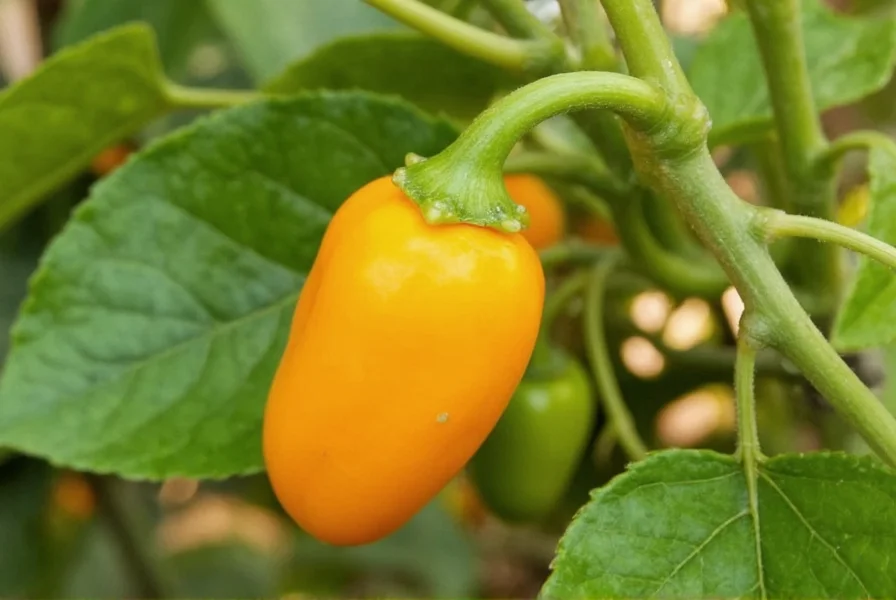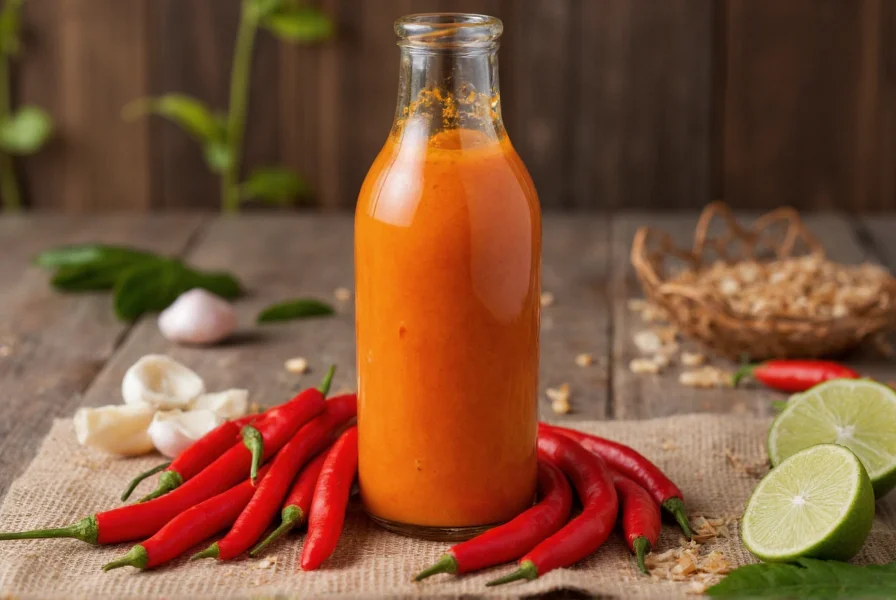Datil pepper sauce stands as one of America's most distinctive regional hot sauces, with roots tracing back to 18th century Florida. While many associate hot sauce with Louisiana or the American Southwest, this citrus-forward condiment represents a unique culinary tradition born in the nation's oldest city—St. Augustine, Florida. The story of datil pepper sauce reveals how immigrant communities, local agriculture, and culinary innovation created a flavor profile unlike any other in the hot sauce world.
The Unique Origins of Datil Peppers
Contrary to popular belief, datil peppers didn't originate in Florida. Historical evidence suggests Minorcan immigrants brought these peppers to St. Augustine in the late 1700s after relocating from the Balearic Islands. The Minorcans had previously acquired the peppers during their time in the Mediterranean, where they'd been introduced through Spanish trade routes from the Caribbean.
What makes this history particularly fascinating is how the datil pepper adapted to Florida's unique microclimate. The sandy soil and humid subtropical conditions of northeastern Florida created ideal growing conditions, allowing the datil to develop its distinctive flavor profile that differs from habaneros grown in the same region. For generations, Minorcan descendants cultivated datil peppers in backyard gardens, keeping the tradition alive through family recipes passed down orally.
Flavor Profile and Heat Characteristics
Understanding datil pepper sauce requires examining its complex flavor chemistry. While often compared to habanero sauce, datil offers a markedly different experience:
| Pepper Variety | Scoville Heat Units | Primary Flavor Notes | Common Sauce Applications |
|---|---|---|---|
| Datil | 100,000-300,000 | Citrus, mango, apricot, subtle smokiness | Seafood, poultry, vegetables, dipping sauces |
| Habanero | 100,000-350,000 | Tropical fruit, floral, earthy | Salsas, marinades, Caribbean dishes |
| Scotch Bonnet | 100,000-350,000 | Tropical fruit, slightly sweeter | Jamaican jerk, Caribbean cuisine |
| Serrano | 10,000-23,000 | Grassy, bright, herbal | Salsas, Mexican dishes, garnishes |
The datil's heat registers in the upper medium range on the Scoville scale, comparable to habaneros but with a different heat pattern. Rather than the immediate, frontal burn of many hot peppers, datil delivers a gradual warmth that builds slowly, allowing its complex citrus notes to shine through before the heat fully develops. This characteristic makes datil pepper sauce remarkably versatile in cooking—it enhances rather than dominates dishes.

Traditional Preparation Methods
Authentic datil pepper sauce follows a remarkably simple preparation method that has changed little since the Minorcan era. Traditional recipes contain only three ingredients: fresh datil peppers, vinegar, and salt. The peppers are washed, stemmed, and roughly chopped before being combined with vinegar (traditionally white vinegar) and salt. This mixture then ferments for 3-7 days before being blended to the desired consistency.
Modern variations sometimes include additional ingredients like garlic, onions, or fruit purees, but purists argue these additions mask the datil's unique flavor. The fermentation process is crucial—it develops the sauce's characteristic tang while mellowing the raw heat of the peppers. Unlike many commercial hot sauces that use distilled vinegar for immediate acidity, traditional datil sauce relies on natural fermentation for its distinctive bright flavor.
Culinary Applications and Pairing Suggestions
What truly sets datil pepper sauce apart is its remarkable versatility in the kitchen. Its citrus-forward profile makes it particularly well-suited for:
- Seafood enhancement - The bright acidity cuts through richness in shrimp, scallops, and fish without overpowering delicate flavors
- Poultry seasoning - Adds complexity to grilled chicken or turkey without the overwhelming heat of many hot sauces
- Veggie boost - Elevates roasted or grilled vegetables, especially corn, zucchini, and bell peppers
- Breakfast companion - Pairs surprisingly well with eggs and avocado toast
- Cocktail mixer - Small amounts enhance Bloody Marys and other savory cocktails
Chefs in Northeast Florida often use datil pepper sauce as a finishing touch rather than a primary ingredient. A few drops added just before serving preserves its bright flavor and prevents the heat from intensifying during cooking. For those new to datil pepper sauce, start with small amounts—its heat builds gradually, and it's easy to add more but impossible to remove.
Finding Authentic Datil Pepper Sauce
While datil pepper sauce has gained national recognition, finding authentic versions requires some knowledge. True datil pepper sauce comes from St. Augustine and surrounding areas in Northeast Florida. Many commercial brands outside this region use habaneros with added citrus flavors to mimic datil's profile.
When seeking authentic datil pepper sauce, look for these markers:
- Peppers grown in St. Johns County, Florida (the historical growing region)
- Simple ingredient lists (peppers, vinegar, salt)
- Small-batch production (many authentic producers are family operations)
- References to Minorcan heritage in the brand story
Several St. Augustine-based producers maintain the traditional methods while meeting modern food safety standards. These small operations often sell at local farmers markets, specialty food stores in Florida, and increasingly through online retailers that ship nationwide.

Storage and Shelf Life Considerations
Proper storage significantly impacts datil pepper sauce's flavor development and longevity. Unopened bottles stored in a cool, dark place typically maintain peak quality for 18-24 months. Once opened, refrigeration is essential—the sauce will keep for 6-12 months when properly stored.
Unlike many hot sauces that degrade in flavor over time, quality datil pepper sauce often improves with age as the flavors continue to meld. However, significant color changes (darkening), separation that doesn't resolve with shaking, or off odors indicate the sauce has passed its prime. Always check for these signs before using older bottles.
Preserving a Culinary Heritage
Datil pepper sauce represents more than just a condiment—it's a living piece of American culinary history. As interest in regional food traditions grows, this Florida specialty has moved beyond its local roots while maintaining its distinctive character. Understanding datil pepper sauce's origins, flavor profile, and proper usage allows food enthusiasts to appreciate this unique contribution to America's diverse hot sauce landscape.
Whether you're a hot sauce connoisseur or simply looking to expand your culinary repertoire, datil pepper sauce offers a distinctive flavor experience that bridges the gap between heat and brightness. Its story reminds us that some of America's most interesting food traditions come not from major population centers, but from the quiet persistence of immigrant communities preserving their heritage one pepper at a time.
What makes datil pepper sauce different from habanero sauce?
While datil and habanero peppers belong to the same species (Capsicum chinense) and have similar heat levels, datil pepper sauce has a distinctly citrus-forward flavor profile with notes of mango and apricot, whereas habanero sauce tends toward more tropical fruit and floral notes. Datil sauce also features a slower-building heat that allows its complex flavors to shine before the heat fully develops.
Is datil pepper sauce hotter than sriracha?
Yes, datil pepper sauce is significantly hotter than traditional sriracha. Datil peppers range from 100,000-300,000 Scoville units, while sriracha typically measures around 1,000-2,200 Scoville units. However, datil's heat builds gradually rather than hitting immediately, making it feel less intense initially than its Scoville rating might suggest.
Can I substitute datil pepper sauce for other hot sauces in recipes?
You can substitute datil pepper sauce in most recipes calling for medium-heat hot sauces, but be aware of its distinctive citrus flavor. It works particularly well as a substitute for habanero-based sauces in seafood dishes, but may not be ideal for recipes relying on the smoky flavor of chipotle or the vinegar-forward profile of Louisiana-style hot sauces.
Why is authentic datil pepper sauce primarily produced in Florida?
Authentic datil pepper sauce comes from St. Augustine, Florida, because that's where Minorcan immigrants established the pepper's cultivation in the late 18th century. The specific microclimate of Northeast Florida—with its sandy soil and humid subtropical conditions—creates the ideal growing environment that develops datil peppers' distinctive flavor profile, which differs from the same peppers grown in other regions.
How should I store datil pepper sauce for maximum freshness?
Store unopened datil pepper sauce in a cool, dark place for up to 24 months. Once opened, refrigerate the bottle immediately—properly stored, it will maintain peak quality for 6-12 months. Quality datil sauce often improves with age as flavors continue to meld, but discard if you notice significant darkening, persistent separation, or off odors.










 浙公网安备
33010002000092号
浙公网安备
33010002000092号 浙B2-20120091-4
浙B2-20120091-4